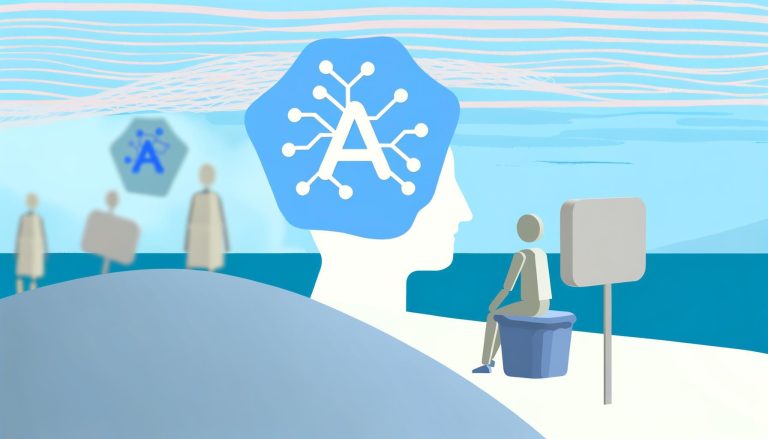The shift to remote work has brought significant changes to our daily routines, blending our professional and personal lives in unforeseen ways. Balancing work and personal life from home can be challenging, raising concerns about productivity and mental health. Fortunately, AI tools offer compelling solutions to maintain this balance and support home office mental health. Let’s explore how you can navigate work-life balance in remote work with the help of AI tools.
Understanding the New Normal: Remote Work and Its Challenges
Remote work, once a rarity, has become the norm for many. While it offers flexibility and freedom, it can also blur the lines between work life and personal time. Here are some common challenges remote workers face:
- Lack of Boundaries: Working from home can make it difficult to separate work hours from personal time, leading to potential burnout.
- Isolation: When working remotely, individuals may feel isolated from coworkers, impacting their social interactions and teamwork.
- Distractions: The home environment can present distractions such as household chores, family members, or entertainment options, which can affect productivity.
- Overworking: The absence of a physical office can lead employees to overextend their working hours, skipping breaks and working late into the night.
Benefits of AI Tools for Home Office Mental Health
AI tools are transforming the way remote work is structured, offering significant benefits for mental health and work-life balance:
1. Scheduling Assistants
AI-powered scheduling assistants can help manage your calendar efficiently, allowing you to allocate time for work, breaks, and personal activities. By planning your day effectively, you can ensure a better balance between professional responsibilities and personal time.
2. Virtual Companions
Feelings of isolation can be mitigated with AI virtual companions. These AI-based chatbots can simulate conversations, offering companionship and a sense of connection even when you’re physically alone.
3. Mental Health Apps
Several AI-powered mental health apps provide resources such as guided meditations, cognitive behavioral therapy (CBT) exercises, and mood tracking. Apps like these can help you manage stress, anxiety, and maintain a positive mental outlook.
4. Productivity Supervisors
AI tools can monitor your productivity levels, providing insights into how you spend your working hours and offering suggestions for improvement. This way, you can identify time-wasters and enhance your efficiency, leaving more room for downtime.
5. Smart Break Reminders
AI systems can send you reminders to take regular breaks, promoting physical and mental health. This ensures you step away from the screen periodically, which is essential for maintaining work-life balance.
6. Automated Task Management
AI can prioritize tasks and automate repetitive ones, reducing your workload and freeing up time for more important tasks or personal activities. By leveraging AI for task management, you can achieve more with less effort, reducing stress and enhancing your overall well-being.
Practical Tips for Maintaining Work-Life Balance with AI Tools
1. Define Clear Boundaries
Establish distinct boundaries between work and personal life. Use AI scheduling tools to set specific work hours and avoid working beyond those times.
2. Leverage AI for Breaks
Use AI reminders to schedule regular breaks throughout the day. Incorporate stretching, walking, or short exercises to rejuvenate yourself, enhancing both physical and mental health.
3. Track Your Mood
Utilize AI mood tracking apps to monitor your emotional state. Regularly review these insights to identify patterns and make necessary adjustments to your routine to support mental well-being.
4. Automate Routine Tasks
Take advantage of AI automation tools for repetitive tasks such as email sorting, meeting scheduling, and data entry. This minimizes mundane activities, allowing you to focus on more meaningful work.
5. Engage in Virtual Social Interactions
Use AI-powered virtual companions or collaboration tools to stay connected with friends, family, and colleagues. Regular social interactions are crucial for mental health, even in a remote setting.
6. Utilize Mental Health Resources
AI mental health apps offer guided meditations, stress management techniques, and therapeutic exercises. Take time each day to engage with these resources to maintain a balanced mental state.
7. Reflect and Adjust
Regularly reflect on your work-life balance and adjust your strategies as needed. Use AI tools to gather data and insights on your productivity and well-being, and make changes to enhance your overall balance and satisfaction.
Conclusion
Achieving a healthy work-life balance while working remotely is indeed challenging, but not impossible. By leveraging AI tools, you can set clearer boundaries, manage time effectively, and support your mental health. Remember, the key to thriving in a remote work environment lies in understanding your needs, making use of available technology, and regularly assessing your work-life balance. Stay proactive and embrace the opportunities AI provides to maintain and enhance your mental well-being and productivity.
Explore the Zenora App for comprehensive tools that can help you track your moods, set goals, and review statistics to optimize your work-life balance and mental health. Embrace technology to foster a more harmonious and fulfilling remote work experience.





